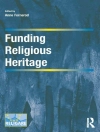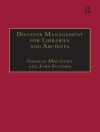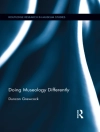Community Engagement: Principles, Strategies and Practices is a collection of chapters written by engaged scholars. The authors of the chapters work in diverse settings and come from different philosophies of community engagement. For instance, Taylor and Luter in Chapter One cogently make the argument that universities have essentially sold out when it comes to community engagement. The authors argue that engaged scholars would be better served by looking at the Civil Rights Movements than progressive theories that drive service learning. Harkavy, Hodges, and Weeks take an opposite position and discuss historical figures such as Francis Bacon. Bacon spoke of improving a man’s estate. By that, Bacon meant that people should make life better for all. Astute readers will want to read and dwell on the thoughts and ideas generated in the first two chapters. In Chapter Three, Bielefeldt, discusses service learning and community engagement in relation to engineering. Her chapter will interest those who do not traditionally engage with the community and in service learning. Bielefeldt’s writing style is exciting and will open new doors for readers of our text. Basma and Arce-Trigatti introduce two important concepts to readers. The authors claim that mental health services are delivered more effectively through community schools than through traditional health clinics. Further, the authors entertain the notion that migrants and refugees are often missed by those doing community engagement. Basma and Arce-Trigatti fall in line with Taylor and Luter in bringing up important questions concerning the role that universities are taking in community engagement. In Chapter Five, Iwaskai does a marvelous job of describing how he involved those he is studying as part of his research team. Iwaskai’s discussion of the YPAR method may be of particular interest for young scholars who want to do on-the-ground research. In Chapter Six, Conwill writes from an ethnographic perspective about his personal experiences as a psychologist and community organizer. He is an inductive thinker and brings his experiences alive by relating them to theory. Readers of this chapter should be enticed to think about this type of work in regards to community engagement and service learning. In Chapter Seven, Kronick and Daniels discuss how the University of Tennessee engages with the community. The authors present service learning and collaboration as important aspects of community engagement. Hicks-Goldston and Goldston present a unique way of looking at service learning in Chapter Eight. They report both the successes and failures of doing service learning online. In Chapter Nine, Bruner, Szepe, and Blueford discuss systems theory. The authors consider the role that closed systems play in the role of mental health care. Finally, Butler uses extreme detail to describe a university-business collaboration effort to establish a STEM program.
Robert F Kronick
Community Engagement [PDF ebook]
Principles, Strategies and Practices
Community Engagement [PDF ebook]
Principles, Strategies and Practices
Buy this ebook and get 1 more FREE!
Format PDF ● Pages 277 ● ISBN 9781536130256 ● Editor Robert F Kronick ● Publisher Nova Science Publishers ● Published 2018 ● Downloadable 3 times ● Currency EUR ● ID 7217565 ● Copy protection Adobe DRM
Requires a DRM capable ebook reader












